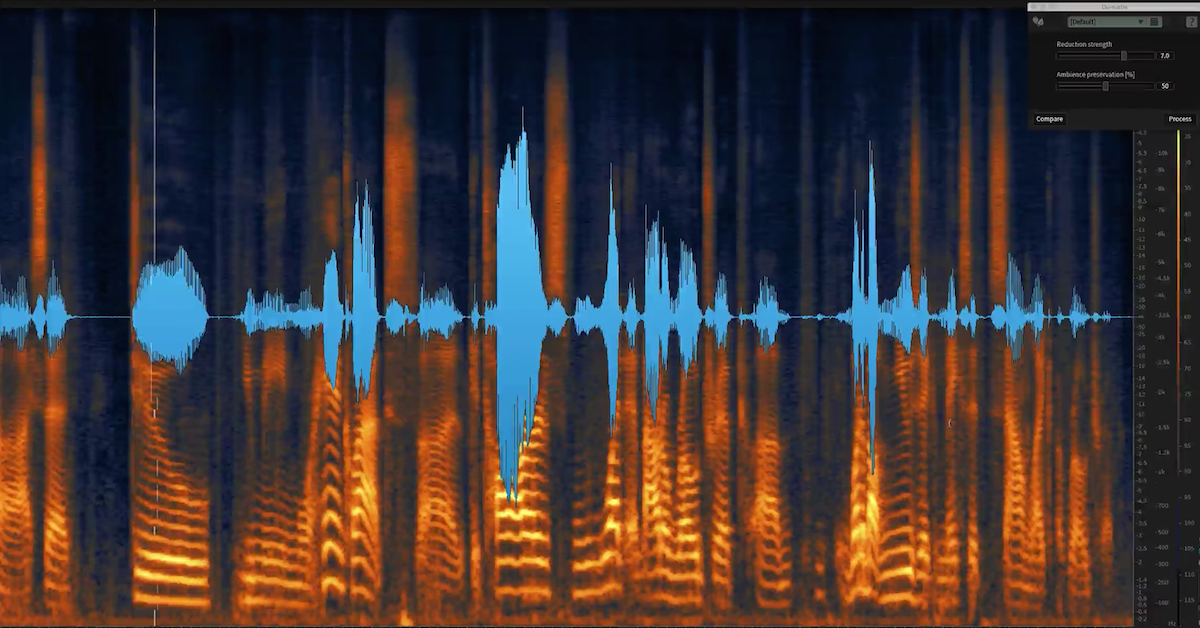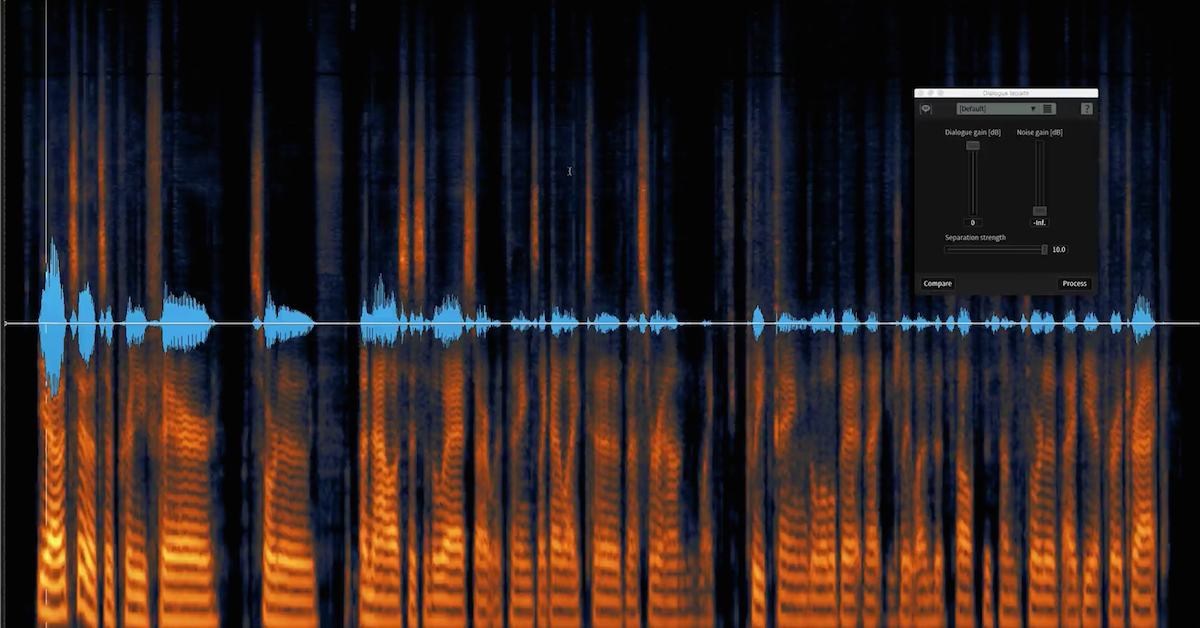How to Use De-Rustle in iZotope RX 6
Once you’ve downloaded the test file called, “Post Production_De-Rustle” for this tutorial from the RX web page, and opened it in RX 6 by clicking and dragging it into the RX application window, or by opening RX and pressing Command+O or Control+O on a PC to locate and open the sample.
Your RX window should look like mine, with the file “Post Production_De-Rustle” in a tab on the top-left hand side of the screen.
De-Rustle reduces the noise, or rustle, generated by a lavalier microphone rubbing or brushing against a person’s clothing during recording. Lav rustle can vary unpredictably over time, and exhibit a wide variety of sonic characteristics from high frequency brushing to low frequency thuds.
Let’s have a listen to this sample which has very noticeable rustle noises coming from a lavalier microphone that’s come into contact with a person’s clothes.
I’ll press return to bring the playback head to the beginning of the sample, and space bar to play the sample.
[voice sample]
Let’s use the new De-Rustle module to reduce the presence of those distracting rustle noises.
I’ll find that on the right, click it, and you’ll notice a few parameters. The first is reduction strength. If I move this slider to a higher value, like eight or nine, the processing more strictly defines what it classifies as dialogue, which can result in more rustle reduction at the cost of reducing speech clarity.
For smaller values, the processing more broadly defines what it classifies as dialogue, which potentially allows more rustle, but reduces the possibility of speech clarity loss as a result of the processing.
I’m going to push this all the way to 10, because this sample features a lot of rustle noises. I should add that de-rustle will still process, even when the reduction strength is set to zero.
The next parameter is ambience preservation. Sometimes, the speech separation algorithm will remove background ambience in addition to rustle, which may be undesirable. To remove the rustle but retain the noise floor or background ambience, the noise floor amount slider should be set to a non-zero value.
Higher values will retain more of the noise floor.
In the case of this example, I’m not hearing much of a noise floor to preserve. It’s a very cleanly recorded example. However, there are some pretty aggressive rustle noises, so I’m just going to slide this all the way down to zero, and once I’m happy with my parameters, I’ll press process.
Let’s have a listen back. So here’s after we used De-Rustle.
[voice sample, after processing]
You might have noticed that some rustle noises continue to poke through, distracting us from the dialogue. What I’ll do is run another pass at my settings to double down on the amount of de-rustling taking press. Running multiple passes of any module in RX 6 is standard practice if you’re dealing with especially noisy samples, and in this case, we’ve got one with a lot of rustle on it.
So let’s do another pass. I’ll hit process again. Let’s have another listen back.
So here is after we ran another pass of de-rustle.
[voice sample, after double processing]
And for reference, here’s before we did any processing with the De-Rustle module.
[voice sample, before processing]
And once more, here’s after we did two passes of De-Rustle.
[voice sample, after double processing]
The results are pretty dramatic.
For more information, and to download your own samples to use with RX 6, head to izotope.com/RX.





